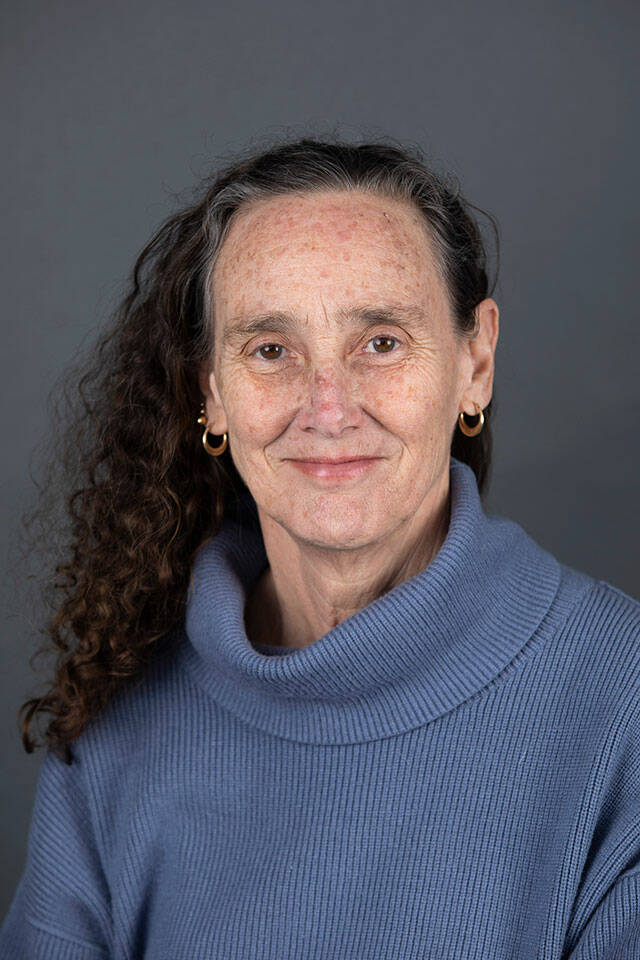One of my students has a t-shirt that always brings a chuckle from his classmates. It reads, “History: Don’t make me repeat myself.”
In recent months, as we wrestle with the question of how to live with an ongoing COVID-19 pandemic, that t-shirt has had a more sobering effect on me.
Between 1918 and 1920, pandemic influenza raged around the globe, killing 50 to 100 million people, 675,00 of them Americans. It hit the United States first in the spring of 1918, largely unrecognized except by military epidemiologists. But a world at war took notice when it reached the Western Front. Months later it exploded in its more virulent and deadly second wave, and soon reached even the most isolated communities worldwide. After seeming to fade, it returned to torment communities that winter and spring of 1919, and again in early 1920. My grandfather lost both of his parents in that final wave.
The strategies Americans turned to when influenza struck were largely the same as those familiar from the fight against COVID—public health education, closures, prohibitions on large gatherings, social distancing, masking, ventilation, and quarantining. Initially, most citizens supported these measures. Leaders swayed citizens to understand the fight against the flu as part of the war effort, as their patriotic duty.
Importantly, the public’s compliance was also the result of its abiding trust of doctors and public health leaders. The mid-nineteenth-century discovery of bacteria had led to the identification of the causal agent of several diseases facilitating the prevention of illnesses that had long plagued Americans. Anxious to avoid the deadly influenza, citizens accepted public health measures. At first.
When the pandemic returned in its third wave, often within weeks of the lifting of previous restrictions, sizable opposition to resuming controls sometimes emerged. In San Francisco, for instance, city council meetings to consider a renewal of a masking order brought massive crowds, and when leadership finally imposed another mandate, a new Anti-Mask League drew hundreds. More common were individual resistance and carelessness.
By the time the third wave hit, Americans were tired of the pandemic, anxious to resume “normal” activities. When influenza returned in a fourth wave in 1920, few took notice, and over time, a profound cultural amnesia, a silence regarding the pandemic, descended.
When I wrote about the 1918 pandemic a decade ago, I was critical of what I saw as the failures of both public health leadership and the citizenry. Officials seemed to put too little faith in the public, fearing panic and initially downplaying the severity of the crisis, a stance that soon led to inconsistent messaging and public mistrust. The citizenry’s resistance to protective measures often struck me as self-interested or politically motivated.
My empathy for those who weathered the 1918-1920 pandemic is much deeper today. The experience of COVID-19 has been humbling for me as I recognize how incompletely I understood what people endured in that earlier pandemic. I did not appreciate the impossible job confronting public health leaders as they attempted to protect their communities through a dynamic and unpredictable pandemic caused by a then-unidentifiable virus. I failed to imagine, too, the heavy weight of uncertainty, the unadulterated trauma of daily losses, and the exhaustion of social isolation endured by the public. I did not realize how powerful the urge to move on could be. Now I see myself in those people of 100 years ago.
But I also recognize crucial differences between their circumstances and ours. We met the coronavirus with a century’s worth of science our forebears lacked. Research on the 1918-1920 pandemic demonstrated the value of public health interventions. We understood that flattening the curve could help prevent overwhelming hospitals and allow greater access to ventilators and oxygen treatments, resources unavailable in 1918. We have antibiotics to treat secondary bacterial infections. All of these bought us time while scientists identified the coronavirus that causes COVID-19 and created vaccines that have saved lives.
I hope we will use what we have learned since 1918 to navigate the months to come with greater care than proved possible in 1919 and 1920. My grandfather lost his mother, Elizabeth Bristow, an Irish immigrant living in Pittsburgh, from complications related to influenza on February 25, 1920. His father began complaining of symptoms during his wife’s funeral and died on February 29. In less than a week their fourteen-year-old son John had become both an orphan and an adult, his family devastated by the fourth wave of the pandemic.
But by 1920 Americans were done thinking about influenza. I believe we can do better. Our pandemic is not over. Cases are on the rise locally. Many in our community remain vulnerable to this disease due to pre-existing conditions or age. Some among us are still recovering from illness, while others are rebuilding lives undone by loss. Our Vashon community has done an extraordinary job committing to the well-being of all of its members, putting our neighbors’ health above our own comfort. We do not know what lies ahead, but we have scientists and public health leadership that can continue to guide us, and to whom we should listen.
Each of us can play an ongoing role in protecting ourselves and our community. As we learn to live with the coronavirus, too, we can continue to remember, support, listen to, and care for those among us whose lives have been forever changed by this pandemic.
Nancy Bristow is a professor of history at the University of Puget Sound in Tacoma, Washington.



